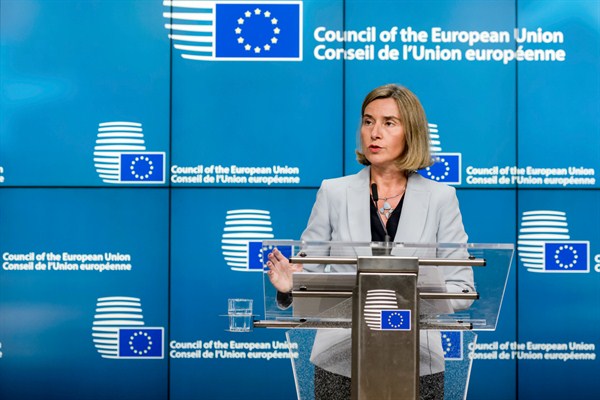On Thursday, at a meeting of European Union defense ministers in Brussels, EU foreign policy chief Federica Mogherini announced that Europe’s first joint military command center could be launched in “a couple of days.” EU states already approved the creation of the new military training headquarters in Brussels, known in EU parlance as the Military Planning and Conduct Capability, or MPCC, back in March, but they have been hashing out the final details this week.
Though the MPCC will initially only oversee joint EU military training operations in Africa, speculation has persisted that it could lay the groundwork for an eventual, standalone “EU army” to rival NATO. The initiative and the nervous discussions surrounding its scope of operations highlight two major questions facing the EU today. Do challenges to European security surpass NATO’s purview enough to justify an integrated EU defense structure? And can Europe jointly address those threats without harming trans-Atlantic relations?
Despite fears of an overreaching “EU army,” Europe’s new military command has the potential to answer these questions. By focusing strictly on missions and regions outside of NATO’s scope, maintaining a clear relationship with NATO, and increasing rather than overstretching EU security resources, the headquarters can be an effective middle ground for European defense strategy.

